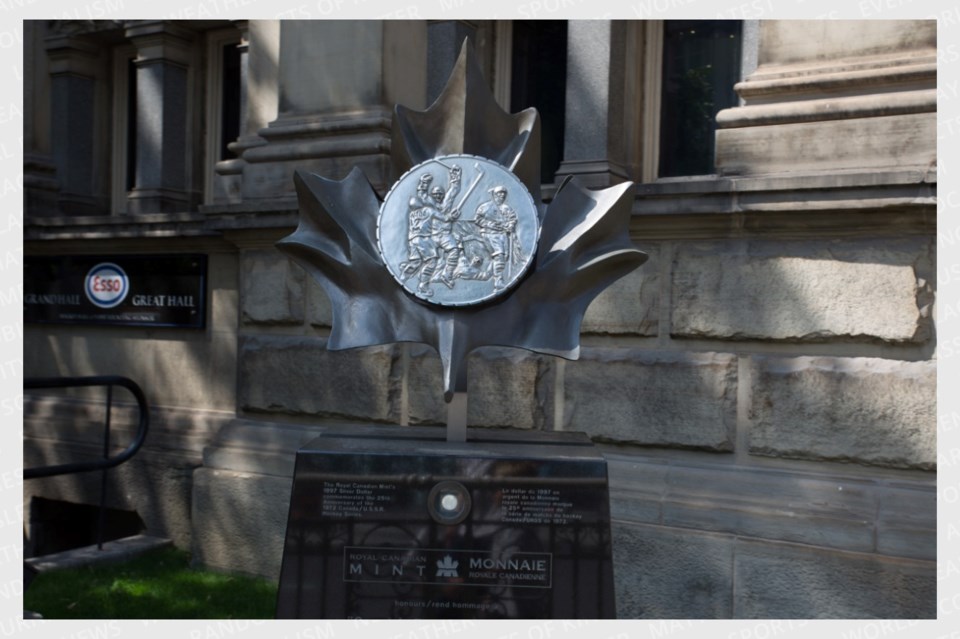It’s been 50 years this month, and I have not forgotten.
In September 1972, most of Canada’s best hockey players faced off against the cream of the Soviet Union, the Russian national team, in an eight-game series like no other, before or since.
Prior to the so-called Summit Series, it had only been amateur hockey players who suited up for Canada during the Olympics, every four years, and the annual international World Championships.
Professional hockey players were not allowed because they were, well, professional, and it would be unfair if guys making a stack of money played against clean-cut boys who were playing for the love of the sport and little else.
Until it turned out that the Soviets or the Russians or USSR or whatever we called them then were playing and practising hockey 11 months a year and pretending to be in the military.
Those who ran international ice hockey wouldn’t listen, however, so the National Hockey League and some branch of the Soviet government set up a separate series of games.
The idea was our best against their best, with no restrictions — although Bobby Orr couldn’t play on his bum knee and Bobby Hull was disqualified because he’d just cashed a $1-million cheque from the fledgling World Hockey Association, which the NHL didn’t appreciate.
But there was little fear the Canadians couldn’t win without the man (still) regarded as the greatest defenceman ever and the left-winger with the game’s most devastating slapshot, one which still makes goalies cringe.
Canada’s talent pool was so deep the Soviets would be buried eight games in a row.
Or so we thought.
And it looked good when Phil Esposito scored 30 seconds into the first game at the old Montreal Forum, and Paul Henderson (don’t forget that name) slammed one home from a face-off won by Bobby Clarke in the Soviet end six minutes later.
The rout was on!
Except that the Soviets tied it up by the end of the period and took a 4-2 lead in the second frame. Clarke scored to make it close early in the third period, but the Russians then scored three in a row to win 7-3.
Canadians were stunned, not only because our boys were so badly beaten on the scoreboard but that the Soviets had pumped seven goals behind Ken Dryden, one of the NHL’s very best goaltenders.
To the Canadians’ credit, they bounced back in game two at Toronto’s Maple Leaf Gardens, winning 4-1 behind stellar goaltending from Phil’s brother, Tony Esposito, and a great, great shorthanded goal by Peter Mahovlich. Soviet goaltender Vladislav Tretiak’s jock strap might still be lying in his crease after Mahovlich’s dekes.
And let’s not forget Yvan Cournoyer’s goal, his blazing speed down right wing and a shot between Tretiak’s goal pads.
But game two turned out to be an outlier. The Canadians weren’t in hockey shape, and the Russians were. The Russians played like a team; the Canadians played like it was a shinny game.
Game three was a 4-4 tie after the Canadians blew a two-goal lead with five minutes left in the second period, the Russians won game four 5-3, going away.
And those games were all in Canada!
Game five in Moscow was another disappointment, with Canada leading 4-1 with about 10 minutes left in the game, only to wilt again and lose 5-4.
So after five games, the Soviets had won three, the Canadians one and another game was a tie.
Canada needed to take the last three games to win the series.
Frankly, I don’t know how the Canadians did it.
But they did, winning 3-2, 4-3 and 6-5, with Henderson scoring the winning goal in each game.
And Canada won despite trailing 5-3 after two periods in the deciding game.
Dryden would not allow another goal in the third period, I remember.
Henderson’s historic goal came with just 34 seeds left, assisted by Esposito, of course.
Team Canada returned home to a heroes’ welcome.
Canada’s hockey supremacy had been defended, restored, whatever you want to call it.
But they did it mostly on guts, from what I remember, playing the type of hard-nosed hockey that Canadians are now known for.
And feared for, it’s worth adding.
Henderson had always been a very good player, with Detroit Red Wings and Toronto Maple Leafs, a swift skater with a nose for goals.
That he was such a fast skater and looked to be in hockey shape from the beginning of the series no doubt aided his heroics.
He faded afterwards, of course, and those who run the Hockey Hall of Fame have shamefully not admitted him. Apparently fame isn’t as important as statistics to those people.
Henderson is still famous for that winning goal 50 years later.
I remember getting the afternoon off high school to go home and watch the last game with my family - although it was mostly just my dad and I who were interested, especially after the Canadians got behind.
The last game was Sept. 28, and that’s coming up fast.
Somewhere I have the entire series on DVD, so I should sit down and watch at least the last game, one more time.
It was hockey worth remembering.
Bob Bruton covers city politics for BarrieToday when he’s not playing hockey, watching hockey or thinking about hockey, which isn’t often.



